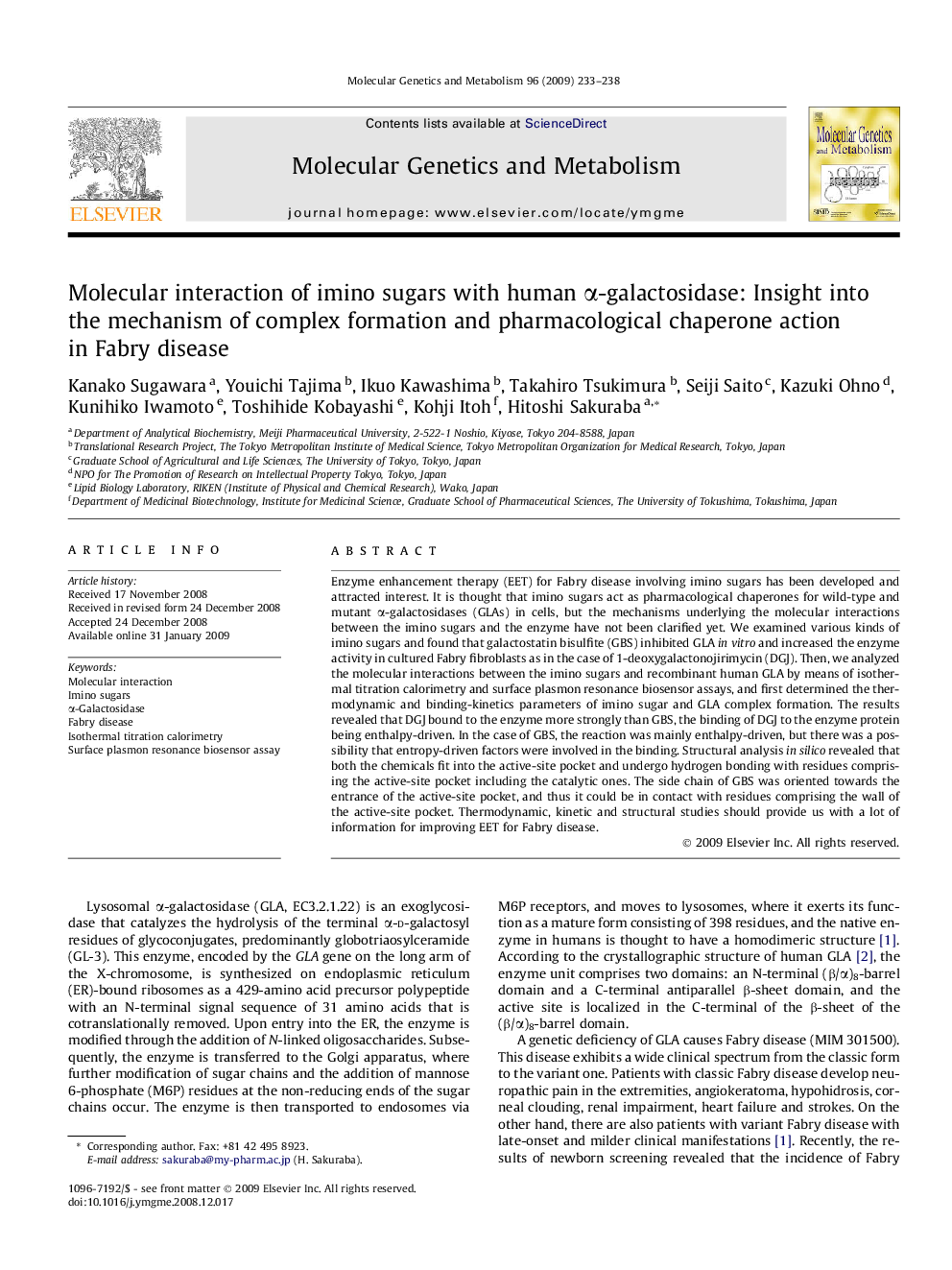| Article ID | Journal | Published Year | Pages | File Type |
|---|---|---|---|---|
| 10834345 | Molecular Genetics and Metabolism | 2009 | 6 Pages |
Abstract
Enzyme enhancement therapy (EET) for Fabry disease involving imino sugars has been developed and attracted interest. It is thought that imino sugars act as pharmacological chaperones for wild-type and mutant α-galactosidases (GLAs) in cells, but the mechanisms underlying the molecular interactions between the imino sugars and the enzyme have not been clarified yet. We examined various kinds of imino sugars and found that galactostatin bisulfite (GBS) inhibited GLA in vitro and increased the enzyme activity in cultured Fabry fibroblasts as in the case of 1-deoxygalactonojirimycin (DGJ). Then, we analyzed the molecular interactions between the imino sugars and recombinant human GLA by means of isothermal titration calorimetry and surface plasmon resonance biosensor assays, and first determined the thermodynamic and binding-kinetics parameters of imino sugar and GLA complex formation. The results revealed that DGJ bound to the enzyme more strongly than GBS, the binding of DGJ to the enzyme protein being enthalpy-driven. In the case of GBS, the reaction was mainly enthalpy-driven, but there was a possibility that entropy-driven factors were involved in the binding. Structural analysis in silico revealed that both the chemicals fit into the active-site pocket and undergo hydrogen bonding with residues comprising the active-site pocket including the catalytic ones. The side chain of GBS was oriented towards the entrance of the active-site pocket, and thus it could be in contact with residues comprising the wall of the active-site pocket. Thermodynamic, kinetic and structural studies should provide us with a lot of information for improving EET for Fabry disease.
Keywords
Related Topics
Life Sciences
Biochemistry, Genetics and Molecular Biology
Biochemistry
Authors
Kanako Sugawara, Youichi Tajima, Ikuo Kawashima, Takahiro Tsukimura, Seiji Saito, Kazuki Ohno, Kunihiko Iwamoto, Toshihide Kobayashi, Kohji Itoh, Hitoshi Sakuraba,
